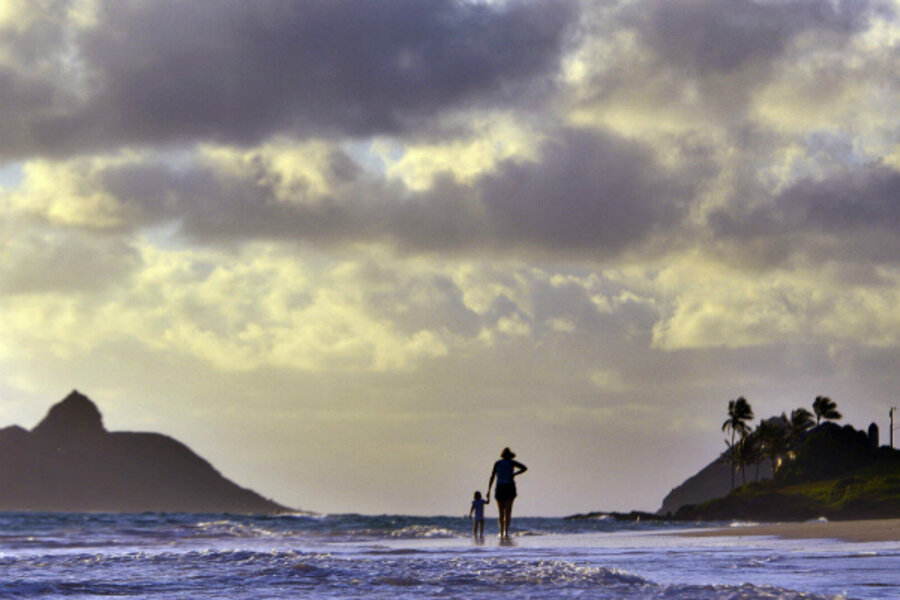Hawaii braces for Iselle & Julio: an unheard of one-two hurricane hit
Loading...
| LOS ANGELES
Hawaii is preparing for a one-two hurricane punch this weekend that weather experts are calling unprecedented.
While the islands have had their share or tropical storms, as well as hurricanes, according to local records dating back to the mid-20th century, this would be the first time the island chain has recorded experiencing such back-to-back, high-intensity storms. And while the state last weathered a hurricane 22 years ago, meteorologists say there are no accounts of the big island of Hawaii ever taking a direct hit by a hurricane coming in from the east.
Iselle, bearing down with 90 m.p.h winds from the east, is expected to make landfall around 8 p.m., local time Thursday night. Julio, with winds already topping 100 m.p.h., is expected to approach the islands over the weekend, hitting land Monday evening.
“Any time a place has major storms impacting within a few days of each other is very rare,” says Dan Kottlowski, senior meteorologist for Accu Weather, based in State College, Pa. He points to the phenomenon happening only very occasionally.
“We have seen this happen in the Gulf Coast,” he says, noting Florida in 2004. The city of Orlando was under a hurricane watch four times in that year, “which is very unusual,” he says. Then, there was Charleston, S.C., back in the 1800s, he notes. “The city had three hurricanes within a week of each other, which doesn’t happen often.”
One concern arising from the infrequency of such an event is that islanders will not take the warnings as seriously as they should, says Mr. Kottlowski. Located in the middle of the Pacific, Hawaii itself is naturally vulnerable to storm activity. But the region has factors such as dry air and cold ocean water that often help to downgrade full-blown hurricanes into tropical storms or less.
“So many islanders are used to dismissing warnings and taking a wait-and-see attitude,” he says. “This time, they should not,” he adds.
By all news accounts, many residents, as well as tourists, are taking the news seriously. Mike Kelley, the manager of Cost-U-Less in Hilo, told the Honolulu NBC affiliate that people were stocking up on basics: "a lot of rice, water, toilet paper.” Bottled water was sold out, with no new shipments expected until Thursday or possibly Friday, he said.
Hotels and businesses are also responding quickly, says Char Miller, a professor at Pomona College in Claremont, Calif., who is vacationing on Maui. “Every hotel I walked past this morning was pulling in any object that can become a missile. The pools are filling up with lounge chairs – the safest place to place them apparently! The stores are pretty well emptied of water (and potato chips – go figure),” he says via e-mail.
Official response also has been swift. Gov. Neil Abercrombie (D) has signed an emergency declaration that allows state officials to tap into special emergency funds. Governor Abercrombie spoke to reporters at a press conference surrounded by his Cabinet, saying, "The sole purpose is to see to it the health and safety of the people of Hawaii is first and foremost."
Hawaii has an annual series of emergency hurricane drills which islanders routinely perform. Modern technology, such as new emergency-communication and weather-mapping phone apps, have helped residents stay up with the best emergency and storm information.
However advances in such consumer tech can have a down side, says Accu Weather meteorologist Kottlowski. Many people now feel that they can track the storm and make decisions on their own.
“Sometimes this is good, but sometimes this can be bad,” he says, adding that people really need to pay attention to the information coming from local authorities, particularly when the weather event is so outside the normal routines.
This report includes material from the Associated Press.







